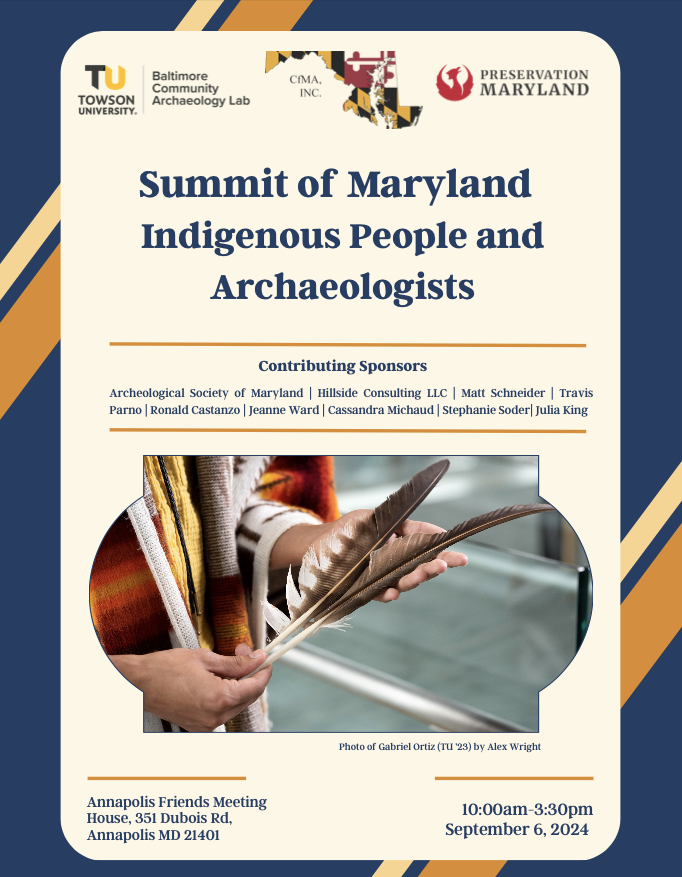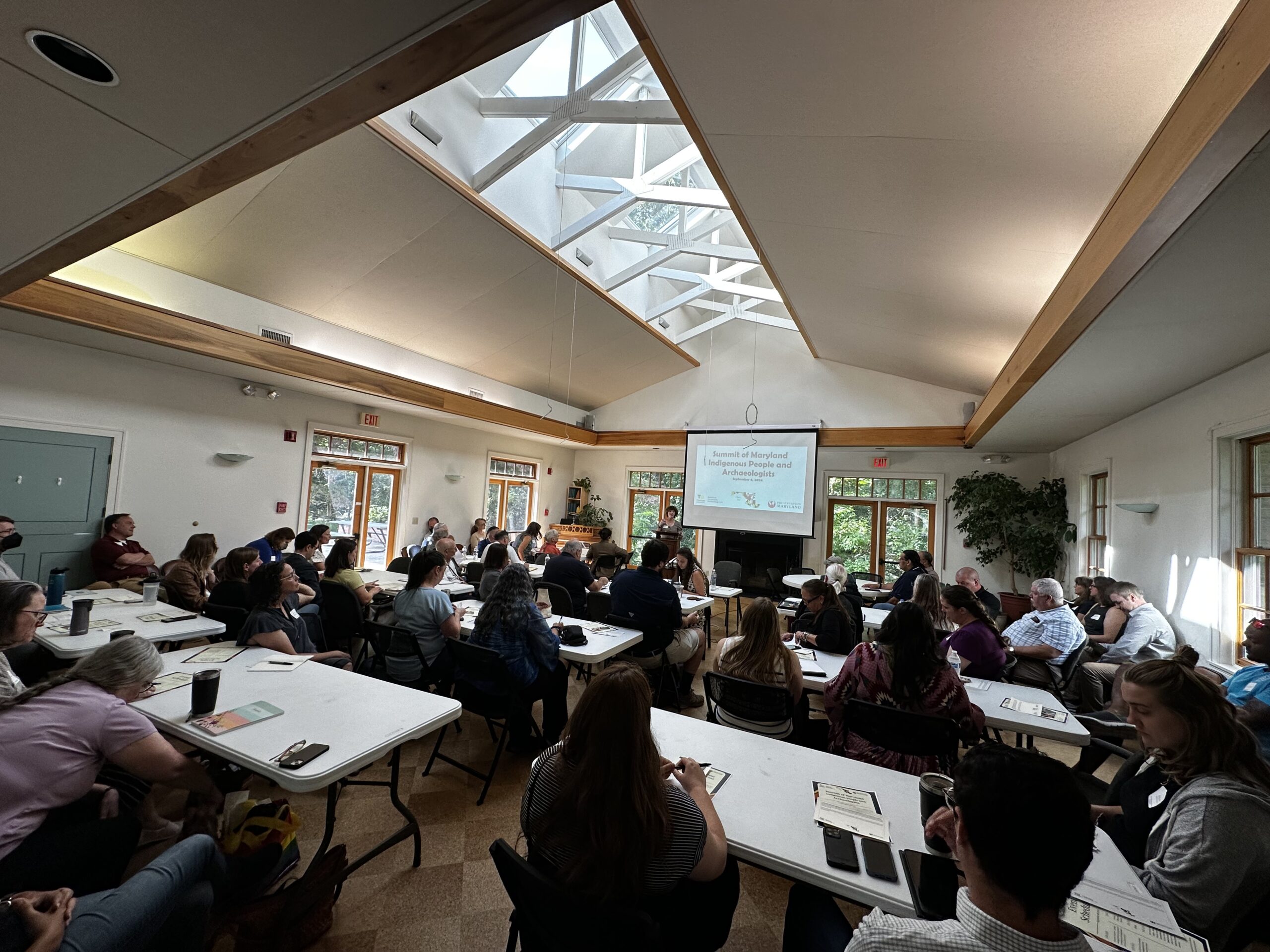By Dr. Katherine Sterner, Towson University
On September 6, Preservation Maryland, the Baltimore Community Archaeology Lab (BCAL) at Towson University, and the Native American Liaison Committee of the Council for Maryland Archeology (CfMA) sponsored a Summit of Maryland Indigenous People and Archaeologists. The summit was the result of two years of discussions focused on building understanding and identifying best practices among communities who greatly value Maryland’s heritage and culture and who want to establish good relations and practices to support mutual preservation priorities, access, and knowledge sharing.
More than 90 people attended the summit, with participants from state agencies, museums, institutions of higher education, municipal governments, state recognized Native American tribes, and Indigenous communities. The summit was organized primarily by CfMA’s Native American Liaison Committee, which is made up of professional archaeologists and representatives of Maryland’s Indigenous community. The all-day event consisted of informational sessions in the morning and a panel discussion in the afternoon, with time for informal conversations over lunch. The program included presentations on the Section 106 process, the collections and facilities at the Maryland Archaeological Conservation (MAC) Lab, and how non-federally recognized tribes can participate in the NAGPRA process.

In the afternoon, three Indigenous panelists fielded questions from moderator Dr. Katherine Sterner and the audience about the heritage priorities of the Indigenous community and the next steps that community would like to see pursued. Panelists were: Rico Newman of the Choptico Band of Indians, Tom Bradshaw of the Nause-Waiwash Band of Indians, and Buddy Howard of the Pocomoke Indian Nation. Indigenous panelists and audience members emphasized a desire to work with the archaeological community to uncover more of their own history but were adamant that their foremost need is for the return and reburial of their ancestors. The disinterment of ancestors must be limited to only the most critical of circumstances (e.g., erosion of burials or infrastructure projects approved by the tribes). And tribal communities must be consulted at all stages in the archaeological process, before, during, and after work. This consultation is most critical for projects involving ancestral remains but is desired for all projects on Indigenous sites.
There were tense moments throughout the day. Tribal members expressed anger that ancestors are still curated at the MAC Lab. But they also expressed appreciation for the development of Appropriate Places of Repose where most of those ancestors have been reinterred, after much time and effort from staff at the Maryland Historical Trust. The new NAGPRA regulations passed in early 2024 were front and center in discussions of repatriation and National NAGPRA Program Director Melanie O’Brien’s presentation was a sensitive and optimistic beacon for all attendees, Indigenous and archaeologists alike. The day concluded with positive conversations about paths forward for bringing more Indigenous youth into the field of archaeology, developing tribal monitoring programs for archaeological projects, and pursuing legislation that will protect Indigenous burial sites and facilitate repatriation of ancestors. Partnerships between the Indigenous and preservation communities can make these plans reality.

